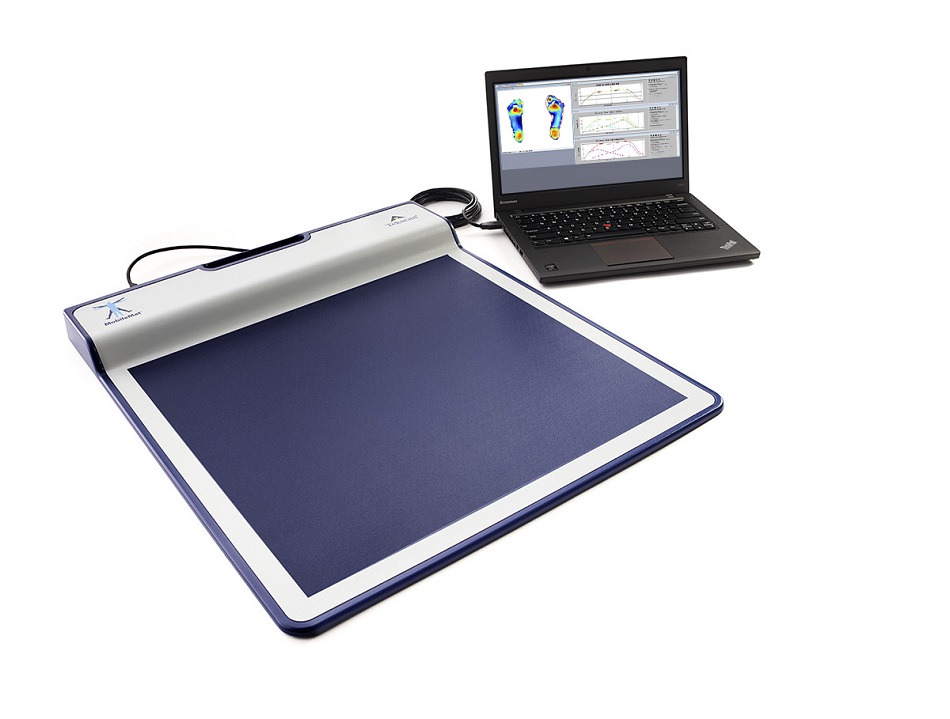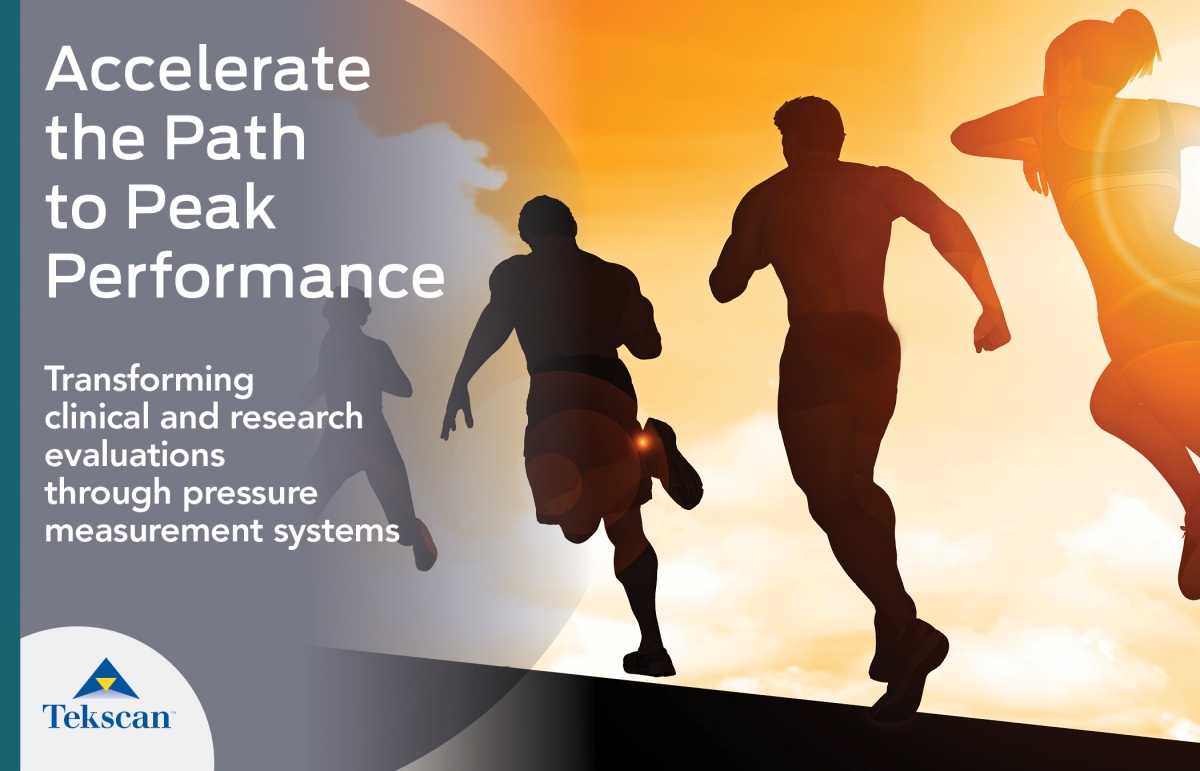BESS Test for Balance Assessment
What is the BESS Test?
The BESS test (Balance Error Scoring System) is a balance assessment protocol that was developed specifically for assessing sports concussions. It is part of the Sport Concussion Assessment Tool (SCAT), which was developed by the Concussion in Sport Group as a standard protocol for concussion testing.
The test was developed by researchers and clinicians at the University of North Carolina Sports Medicine Research Laboratory in Chapel Hill, NC. It includes interpretations of the Romberg test, which consists of balance tests that were originally introduced by Moritz Heinrich Romberg in 1853.
How to Perform the BESS Test
Equipment needed:
- Foam pad
- Stopwatch
- An assistant/spotter
- BESS test protocol (instructions to be read to the subject)
- BESS score card
Test procedure:
Instruct the subject to perform the following tests barefoot, hands on hips, eyes closed, for twenty seconds each.
- Double leg stance with feet together on foam pad
- Double leg stance with feet together on firm surface
- Single leg stance on non-dominant foot on foam pad
- Single leg stance on non-dominant foot on firm surface
- Tandem stance (one foot in front of the other, dominant foot in back) on foam pad
- Tandem stance (one foot in front of the other, dominant foot in back) on firm surface
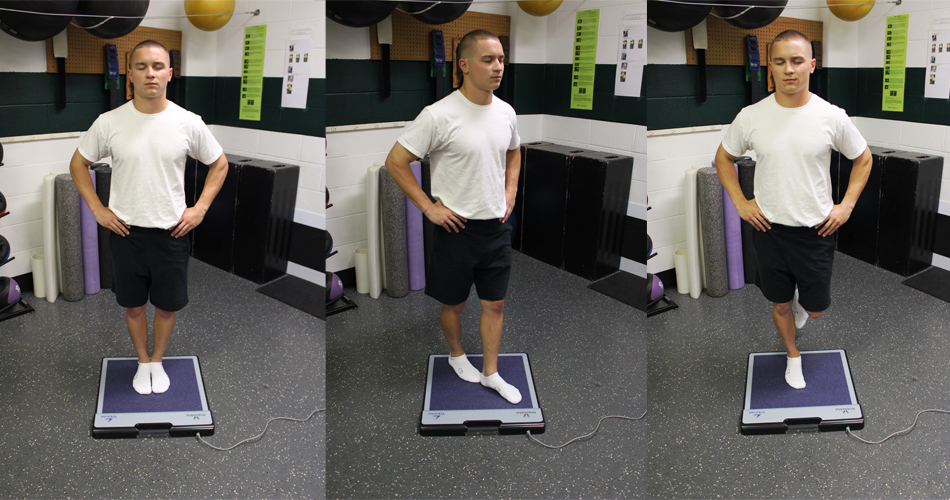 Subject in a variety of BESS test stances
Subject in a variety of BESS test stances
Scoring:
Each of the twenty-second trials is scored on a scale of one to ten by counting the number of errors, or deviations from the proper stance, accumulated by the subject. Each error equals one point, and a higher score indicates poor performance. The examiner will begin counting errors only after the individual has assumed the proper testing position. Errors are recording when any of the following occur:
- Moving the hands off of the iliac crests
- Opening the eyes
- Step, stumble, or fall
- Abduction or flexion of the hip beyond 30 degrees
- Lifting the forefoot or heel off of the testing surface
- Remaining out of the proper testing position for greater than 5 seconds
The maximum number of errors for each position is ten, and multiple errors occurring simultaneously will only count as one. If a subject is unable to maintain the testing procedure for a minimum of five seconds, then they are assigned the highest score, ten, for that position. The maximum total score is 60 (ten errors for each of the six tests).
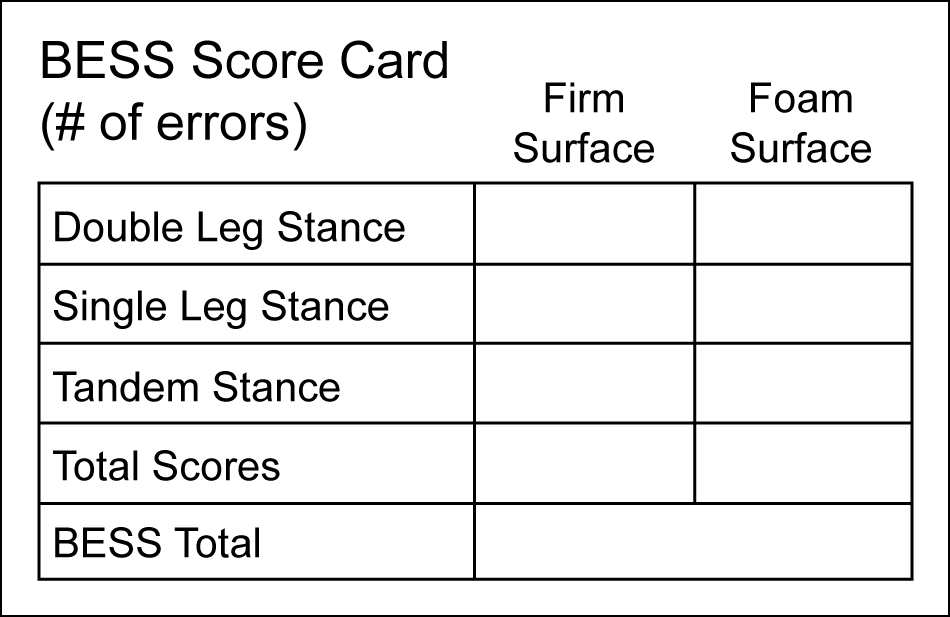
Interpreting data:
When interpreting this information, there is no standard set of normative data for BESS scores.
However, one study aimed to develop such data as a reference for interpreting BESS scores in adults who sustain traumatic brain injuries and adults with diverse neurological or vestibular problems. In this study, they administered the BESS test to 589 adults with no existing conditions that would affect their balance. The results are outlined in this table
When administering the BESS test, it is ideal to have baseline data on the subject in order to compare between pre- and post-concussion performance. However, the data from this study could be used as a guide when baseline data is not available.
Technology
Although the BESS test is generally accepted by the clinical research community, some concerns have been raised about inter- and intra-rater reliability of the manual scoring.
Pressure measuring mat systems like Tekscan's MobileMat™, combined with SportsAT™ software, aim to minimize the chances of human error by automating BESS test scoring. MobileMat serves as the firm surface on which test subjects stand for the test, and a foam pad can be placed on the mat for that portion of the test. The mat is .3 inches thick, and contains high-resolution pressure sensors, adding objective data to the BESS test.
With concerns of human error in concussion assessment, Tekscan aimed to develop a system that would walk testers through the BESS protocol and provide an objective, reliable score.
SportsAT software offers:
- Objective testing to ensure that athletes are always being tested using exactly the same criteria, regardless of the tester
- Meaningful comparisons and trends with athlete/patient's scores to baselines
- Uses that can range over multiple seasons and multiple testers
Research
Researchers, Jaclyn Caccese and Thomas Kaminski, at the University of Delaware compared traditional observational BESS testing to Tekscan's automated BESS module included in the SportsAT Software.
Using 111 NCAA Division-I student-athletes, three trained observers compared observational scores to those automatically calculated using Tekscan's BESS test software module for the six stances. Tekscan's automated BESS module was found to be in good agreement with scores from the traditional method. Read the abstract here.
The BESS test software from Tekscan provides a new level of assurance to team physicians and athletic trainers in that the BESS scores for their athletes will always be determined in the same way, regardless of the training and experience levels of the tester.
Jaclyn Caccese, Doctoral Student - Biomechanics and Movement Science, University of Delaware.
Tekscan has automated the BESS and SCAT3 tests and made it easy for anyone to perform so that athletic trainers and team physicians can be confident that they are always getting accurate and reliable scores.
For more information about SportsAT and the BESS test, visit this page.
Sources:
- https://www.researchgate.net/profile/Bryan_Riemann/publication/27954887…
- https://www.hindawi.com/journals/rerp/2013/846418/
- https://www.physio-pedia.com/Balance_Error_Scoring_System
- https://theconcussionblog.files.wordpress.com/2011/02/bessprotocolnata0…
Download our eBook Accelerate the Path to Peak Performance to see more sports performance applications of Tekscan technology.
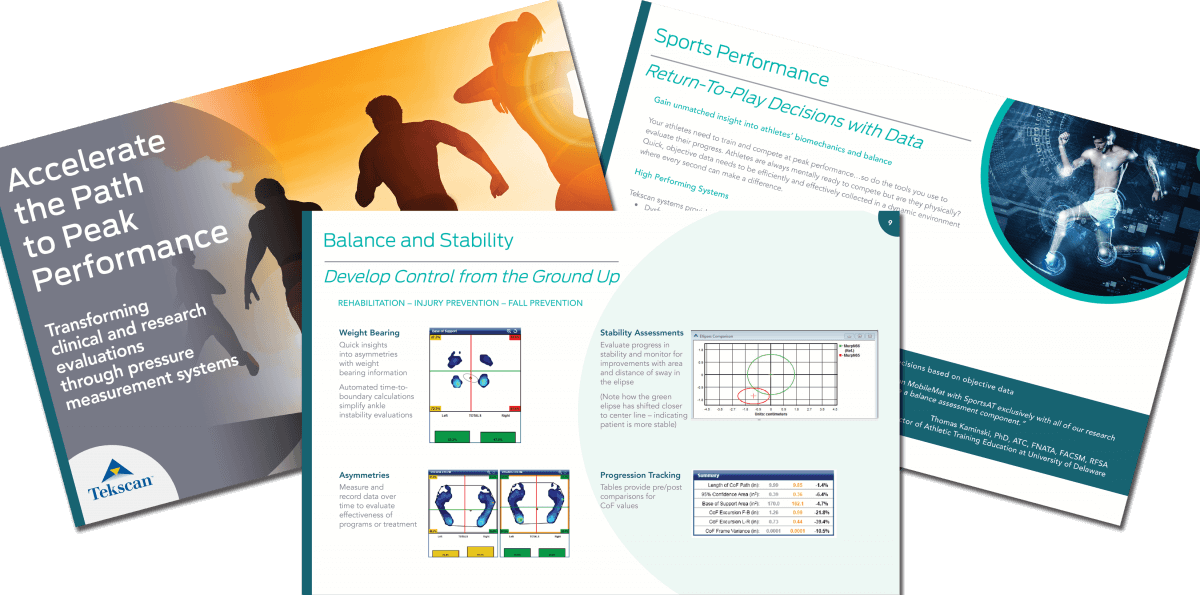 |

